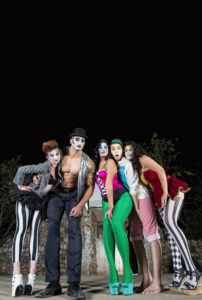 Laban’s life work was to create a rich palette of movement options from which a performer could draw. By the time he wrote Mastery of Movement, he had a lifetime of experience observing movement and working with dancers and actors, which he distilled into this intriguing work.
Laban’s life work was to create a rich palette of movement options from which a performer could draw. By the time he wrote Mastery of Movement, he had a lifetime of experience observing movement and working with dancers and actors, which he distilled into this intriguing work.
Ironically, Laban’s own creative methods and experimental dance and theatre works are little known. However, recent re-creations of work mounted by Valerie Preston-Dunlop, Alison Curtis-Jones, and Melanie Clarke provide glimpses of his work and methods that are useful in illuminating aspects of Mastery of Movement.
In particular, re-creations based upon repertoire of the Kammertanzbühne Laban reveal Laban’s theatrical vision. Housed in an exhibition hall at the Hamburg Zoo, this small company performed several times each week for subscribers who came again and again in the mid-1920s. As Preston-Dunlop notes, the company concentrated on four types of dance: “ornamental, ecstatic, grotesque” and national folk dances. The grotesque, “covered dances that were dramatic, odd, funny and made people uncomfortable, curious, amused, flabbergasted,” in other words, more theatrical than the other three types, which were respectively attractive, solemn, and colorful.
Laban and his assistant, Dussia Bereska, choreographed works, as did members of the company. Much of the movement material was improvised, then shaped, as Preston-Dunlop notes, “through bodily, choreutic, and eukinetic articulation.” As Laban notes in his autobiography, “familiar characters came into being, who were welcomed by the audience as old acquaintances just as in the medieval theatre.”
“For example,” Laban continues, there were “the jester, the juggler, obstinancy, rage, playfulness, the dandy, the tyrant, death, and many more.” Some of these characters make repeat performances in the many dramatic scenarios Laban provides to stimulate readers’ movement imaginations.
Give your own dramatic imagination some food for thought in the forthcoming correspondence course, “Mastering Rudolf Laban’s Mastery of Movement.”
